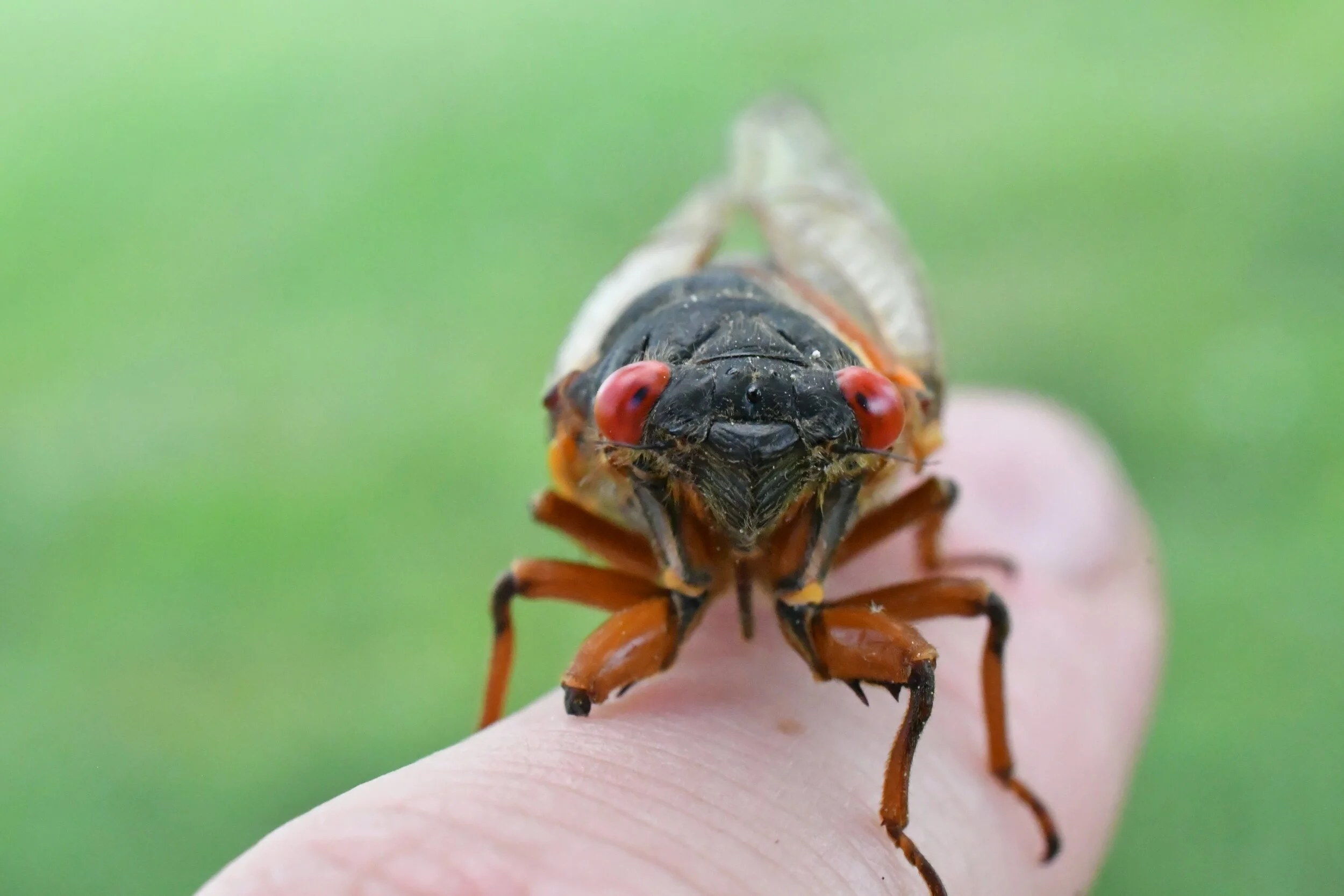Cicadamania
Emily Ellis
Every 17 years, those of us in parts of the eastern U.S. - including the Virginia piedmont - witness an incredible natural phenomenon: the emergence of droves of Brood X cicadas. After spending nearly two decades below the surface, they emerge for a period of 4-6 weeks to shed their exoskeletons, mate, lay eggs in the twigs of trees, and die. As June winds down, we are just seeing the last of the cicadas whizz through the air in most areas. By early July, we won’t see these weird and wonderful insects again for many years.
Bon appetit.
The Brood X emergence - which includes three species of cicadas - is also an exciting occasion for all manner of wildlife (and not-so-wild life!) Cicadas are high in protein, low in carbs, and surprisingly tasty. Part of their survival tactic is something call predator satiation: by emerging in such large numbers, birds, mammals, reptiles and other critters can eat their fill without threatening the population.
Since OSGF chef Saskia Poulos has a good sense of humor and we have several adventurous staff members and residents, we decided to make the best of this sustainable protein source by cooking them up into a couple buggy dishes.* Watch the video below to learn more about these fascinating insects, see chef Saskia’s demonstration of how to cook cicada nymphs and tenerals, and to find out what they tasted like.
Interested in trying out these recipes for yourselves? You might have to act fast if you want to try Brood X insects this cycle, but check out this handy map to learn about active periodical broods in the U.S. You can also eat adult cicadas instead of the more tender juveniles we used - just remove the wings and legs first. Note: shrimp or gnocchi (we’ve heard from a trusted source that the texture is very similar to that of teneral cicadas) make a great cicada substitute in Chef Saskia’s recipes!
Big thanks to Michael Carr, Nick Sette, Saskia Poulos, Ronnie Caison, and Ana Carneiro for their help with the video!
According to the FDA, cicadas are NOT safe to eat for those with seafood allergies.
Banner photo by Michael Carr

